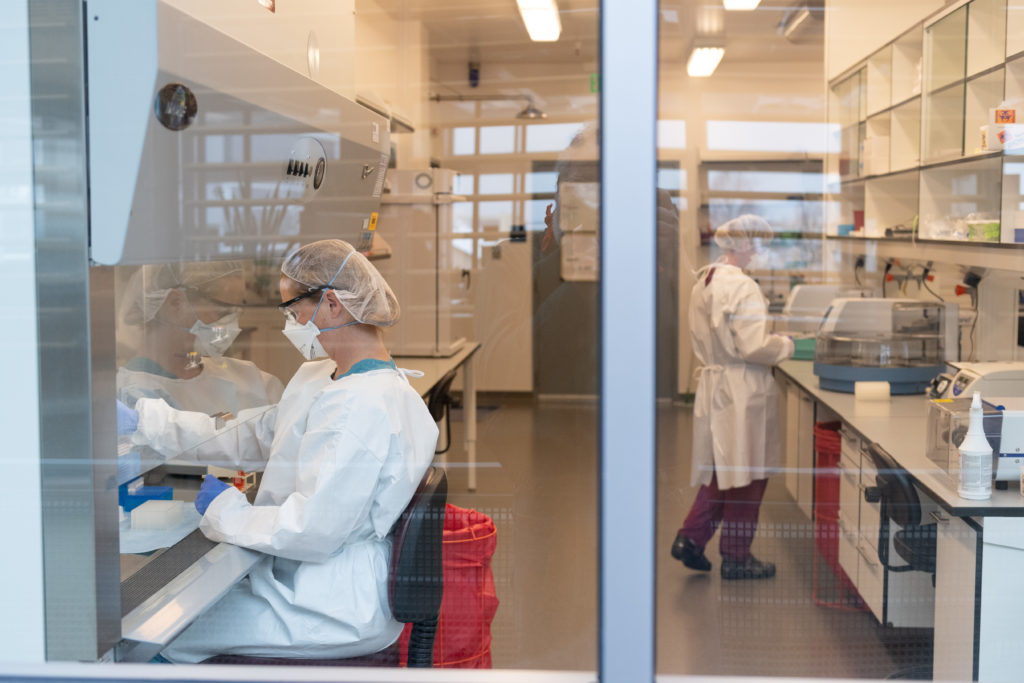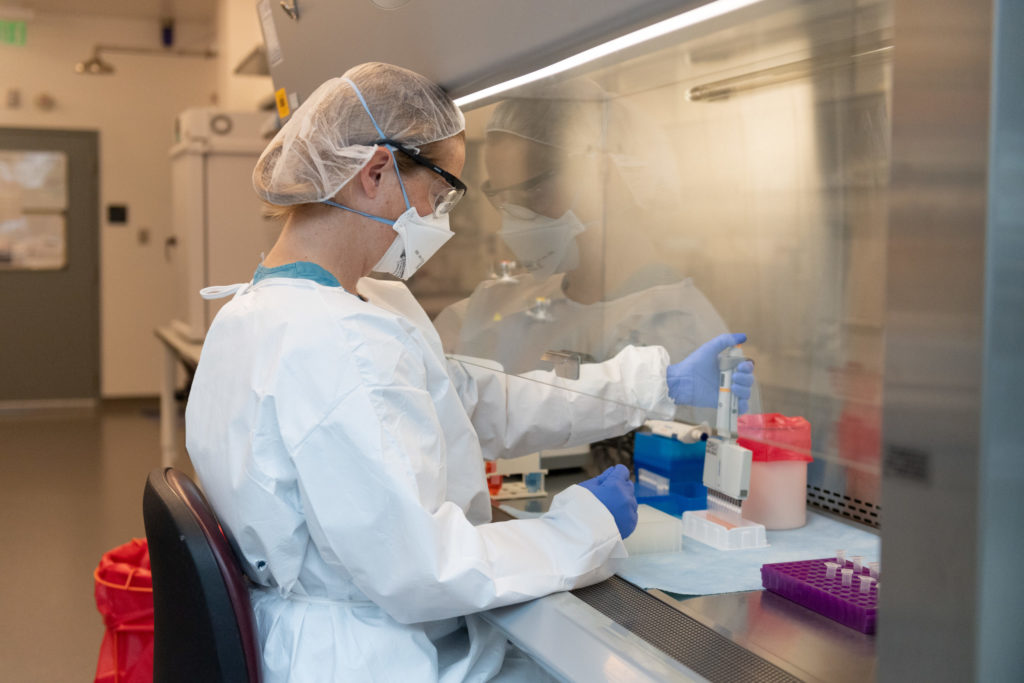Saving Lives: testing healthcare workers to minimize transmission of COVID-19


By Mary Guiden and Lauren Klamm
A team of faculty at Colorado State University is leading an effort to help the most vulnerable people in our communities – residents in long-term care communities – during the coronavirus pandemic.
Earlier this year, Greg Ebel, professor in the Department of Microbiology, Immunology and Pathology, tested samples from thousands of healthcare workers in Colorado to determine if workers without symptoms were silently carrying the virus.
At a press conference on April 29, Colorado Gov. Jared Polis announced a new partnership with the state and CSU to run almost 45,000 tests on nursing home workers. Polis described the project as a “big priority,” with the aim to prevent additional COVID-19 outbreaks at those facilities.
Since the project’s inception, the team has been testing nursing facilities which are prioritized by the state. The tests have identified dozens of individuals who tested positive for COVID-19, but had no symptoms.
Ebel is working on this project with Dr. Nicole Ehrhart, director of the Columbine Health Systems Center for Healthy Aging at CSU, and Dr. Kristy Pabilonia, director of Clinical Diagnostics for CSU’s Veterinary Health System.
Ehrhart introduced the concept for the groundbreaking project during a conference call with Colorado Gov. Jared Polis and state healthcare leaders, including Dr. Greg Gahm, a geriatrician and corporate medical director of Vivage, which owns a range of skilled nursing communities in Colorado and Missouri.
Following the call, he tracked down Ehrhart and asked, “How can we work together?”
The purpose of the project, Ehrhart explained, is to enact an early warning system in long-term care facilities that would allow them to temporarily remove asymptomatic but positive caregivers who contract SARS-CoV-2, the virus that causes COVID-19, from the workforce until they were no longer infectious. This would minimize the chance that these workers could unwittingly infect vulnerable residents.
“The scientific community is putting their heads down, working around the clock, and sharing data across cultural belief systems and across borders that are closed right now,” Ehrhart said. “It’s an incredible moment of humanity and it’s the greatest interdisciplinary scientific effort that’s ever happened on Earth.”
Disease surveillance
The concept behind the research is a basic principle in disease surveillance, especially during a pandemic, said Ehrhart, a veterinarian and professor of surgical oncology at CSU.
“We don’t know when people become infectious with SARS-CoV-2,” she said. “It’s possible that they could be infectious prior to the onset of symptoms. It’s important that when there’s an at-risk community, like seniors, that we think about how to minimize the potential for transmission.”
Ehrhart said the team has been sequencing the virus genomes from these samples to learn more about how the virus is being spread. This will help researchers determine whether it’s due to a common source within the facility or if it’s being brought into the facility from the community.
Gahm said that there are numerous reasons why his organization wanted to know if asymptomatic workers test positive for the COVID-19 disease.
“It allows us to identify those people to say: you’re positive, even though you’ve been wearing a mask and following other safety protocols,” he said. “The Centers for Disease Control and Prevention and the health department is saying you need to go home at this time.”
Bridging Expertise
Once the diagnostic samples are collected at the nursing facilities, they are sent to the CSU Veterinary Diagnostic Laboratory. Dr. Bruce Smith and lab manager Tina Dihle at the CSU Health Network helped the diagnostic lab obtain the Clinical Laboratory Improvement Amendments (CLIA) certification to conduct SARS-CoV-2 testing on human samples.
The Veterinary Diagnostic Lab, a national leader in animal diagnostics, has begun analyzing up to 700 human COVID-19 tests daily, significantly increasing the lab’s normal caseload, according to Pabilonia.
She said that the lab was already testing animal samples for a number of zoonotic pathogens, such as rabies virus and Yersinia pestis, the bacteria that causes plague. As part of the National Animal Health Laboratory Network, the lab runs molecular assays and Pabilonia said that the equipment typically used for animal testing is the same equipment that can be used for human testing.
To date, the lab has tested more than 30,000 samples and is staffed by 60 employees charged with entering data into a reporting system, testing the samples in a Biosafety Level 3 laboratory at CSU and providing timely results. Test results are instantaneously shared with the Colorado Department of Public Health and Environment to assist with decision-making from state health officials.
“Real time messaging is important to the overall public health response,” said Pabilonia. “This way, public health officials can respond quickly to any positive results. Our team is working tirelessly to provide accurate and timely results to combat the global outbreak.”
This research project was originally supported by startup funds through Ehrhart’s work at the Columbine Health Systems Center for Healthy Aging at CSU and Ebel’s lab. Additional support comes from the Office of the Vice President for Research at CSU, College of Health and Human Sciences, College of Natural Sciences, College of Veterinary Medicine and Biomedical Sciences and Walter Scott, Jr. College of Engineering. The project is also funded by the State of Colorado.